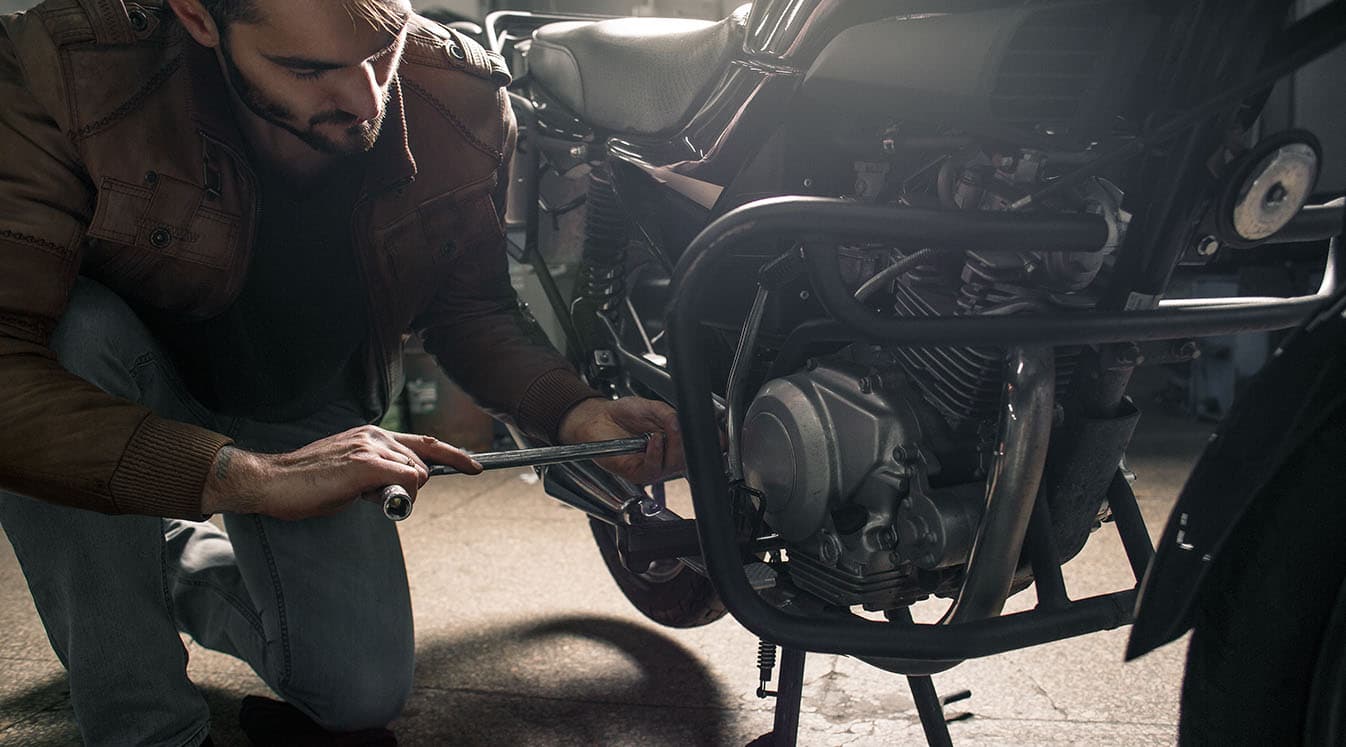
A Beginner’s Guide to Motorcycle Maintenance
Maintaining your bike in peak operating condition takes far less time, money and effort than you might imagine – as well as giving you a deeper understanding of its inner workings.
At first, learning the fundamentals of motorcycle maintenance may seem intimidating; however, becoming adept is an invaluable asset to any rider. This Beginner’s Guide to Motorcycle Maintenance covers essential practices for regular inspection and cleaning procedures.
Check the Tires
Tire condition should never be overlooked; after all, you only have two (or three if riding trike). Any compromise in either tire may lead to serious accidents in an instant.
As soon as it’s warm out, start by inspecting the tread depth of your motorcycle tires. Motorcycle tires often include wear indicators in the form of raised areas in the grooves. Once these become flush with the surface of the tire, it’s time for new ones.
Check the sidewalls of the tires for cuts or bulges that could compromise their structural integrity, leading to blowout. Also look out for uneven wear patterns which might indicate misalignment or suspension issues.
Finally, when using a tube, make sure it’s free from punctures. Carry along some extra tubes along with patching material and glue as backup in case something happens to one.
Check the Brakes
Brakes are one of the most critical components of any motorcycle, so performing an annual health check on them is an easy way to ensure they work when needed. While modern bikes typically need minimal upkeep, a few key points may make all the difference between smooth operation and pulsing levers.
First, visually inspect your pads for excessive wear. Most calipers feature built-in wear indicators which display how much meat remains on each pad; if arrows line up with the rotor face it’s time to replace your pads.
Remove the caliper from its case, clean it using a toothbrush and brake cleaner, and thoroughly wipe down its components, including its brake nipples which should either be rubberized material or stainless steel rather than mild steel. Be sure to tighten all bolts of the caliper tightly as well as any anti-rattle clips or anti-squeal plates as part of this step.
Check the Battery
If your motorcycle battery is dead or almost dead, it won’t start. There could be numerous causes of this situation such as failing to disconnect its terminals when storing for winter storage or leaving lights illuminated while leaving lights switched on; or it could be due to an issue with either its stator or voltage regulator.
Most motorcycles feature an output voltage rating of 14.4 volts, so to ensure your battery reaches this target or higher you should use a multimeter to measure voltage at its terminals.
On many motorcycles, batteries are enclosed in plastic covers or shrouds that must be removed by pulling back or unscrewing some bolts or screws. Once exposed, you can access both positive and negative terminals of the battery; voltage readings should be higher at idle than above idle; 9.5VDC or less indicates near-end-of-life for your battery and requires replacement soon.
Check the Electrical System
Owning a motorcycle can be an exciting adventure, but with ownership comes responsibility to keep it running safely and smoothly. Regular maintenance not only extends its lifespan but also gives riders a deeper understanding of their machine and makes riding safer.
Electrical problems are among the most frequently experienced by riders. From unexpected battery draining to sparking issues, electrical issues can be both annoying and potentially dangerous.
Motorcycle electrical system comprises several key components, including an alternator, rectifier and voltage regulator. Conducting regular checks with a multimeter will help identify and resolve any potential issues with these parts of your bike’s electrical system. Start by setting your multimeter to read DC voltage. Next probe the wire harness connector of your stator using its red(+) lead by “back probing”, while keeping its black(-) lead on a solid ground; look for consistent AC voltage readings indicating its health – this indicates your stator should be operating optimally!



Average Rating